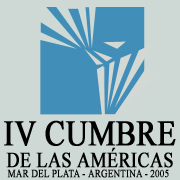At the Fourth Summit of the Americas in Mar del Plata in early November, the governments of 34 Western Hemisphere nations failed in their attempt to resuscitate the Free Trade Area of the Americas. The FTAA was a dream of the first President George Bush for uniting the continent in a market free of trade barriers. It would have been launched at the beginning of 2005. Clearly, this latest meeting of American presidents did not produce any news of importance. It became a televised diplomatic parade in which such important topics as creating and fighting poverty were not treated in depth, say political observers and consultants. The meeting made clear, once again, the profound differences among the leaders of the continent and the rift between the economic and political interests of the United States, on the one hand; and Venezuela and Mercosur (Argentina, Brazil, Uruguay and Paraguay) on the other, these observers add.

Sign up to stay informed about our latest article releases.